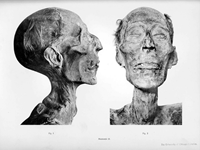Not quite stars, not quite planets: brown dwarfs are objects in between. Within the star cluster shown in this image, NASA's James Webb space telescope has observed the smallest free-floating brown dwarf ever discovered. Webb's sharp infrared eye found this record-breaking brown dwarf in the star cluster IC 348, which is about 1000 light-years away and only 5 million years old.
Studying brown dwarfs helps us understand star formation as well as exoplanets, or planets beyond our solar system. Besides the overlap between the smallest brown dwarfs and the most massive exoplanets, free-floating brown dwarfs come without bound stars, unlike exoplanets, which can hide in the glare of their host stars.
But brown dwarfs are not the only free actors in space. Could this discovery be a rare "rogue planet" instead? This is unlikely: the stars around it are both young and low-mass, so they could not possibly have produced and ejected a giant planet in such a short time.
We still don't fully understand how such small brown dwarfs can form. Webb has much more to do: Future searches may look for similar objects to unravel the mysteries of their formation and composition, as well as their state.
Image Description:
Pink-purple coloured hair-like strands fill the centre of the image and curl to the right and left on either side of the centre. On the right side, the filaments form a dramatic loop that appears to extend towards the viewer. Additional yellow filaments appear in the lower left. Two prominent, bright stars near the centre of the image show Webb's eight-point diffraction spikes. Dozens of faint stars are scattered throughout the image.


 Nielawore
Nielawore









Yorum yazmak için lütfen giriş yapınız